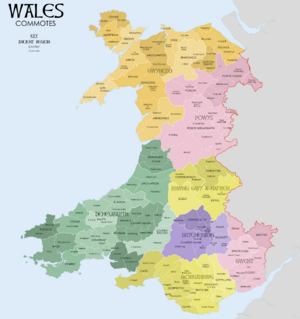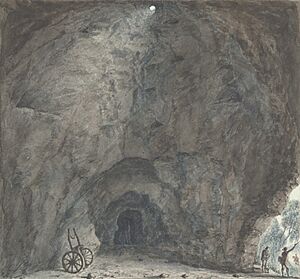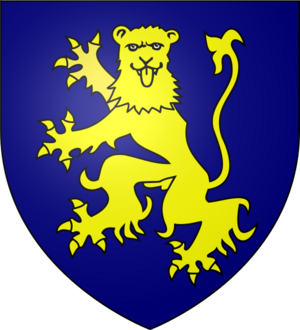Ial facts for kids

Ial or Yale (Welsh: Iâl) was a small area in medieval Wales. It was part of a larger region called Maelor within the Kingdom of Powys. In 1160, when the Kingdom of Powys was divided, Ial became part of Powys Fadog, also known as Lower Powys. This area was ruled by the Royal House of Mathrafal.
A Look at Yale's History

The main village in Yale was Llanarmon-yn-Iâl, located in Denbighshire, Wales. This village was built near a special place dedicated to a Roman Bishop named Germanus of Auxerre.
A castle called Tomen y Faerdre was built near an old Neolithic cave. The first Prince of Wales, Owain Gwynedd, built this castle after he took control of Yale from Madog ap Maredudd, the last Prince of Powys.
Later, King John of England rebuilt the castle. King John, who signed the famous Magna Carta, wanted to secure the area for his battles against Llywelyn ap Iorwerth, the Prince of North Wales. Other castles were also built in Yale. One was Tomen y Rhodwydd, also built by Owain Gwynedd. It was a motte and bailey castle, which is a type of castle made of timber on a raised mound. Another important castle was the "Castle of Yale", built by Gruffydd II ap Madog, a Prince of Powys Fadog.
Yale Under English Rule
During the conquest of Wales by King Edward Longshanks, Yale was taken early on. It was added to the English county of Shropshire. Around this time, the Welsh name "Ial" became "Yale" in English. However, the people of Yale kept their Welsh traditions and laws, as allowed by the Statute of Rhuddlan.
King Edward later combined Yale with other nearby lands. He renamed it the Lordship of Bromfield and Yale. He gave this new lordship to his relative, John de Warenne, 6th Earl of Surrey, who was a military leader.
John de Warenne fought in Scotland against William Wallace at the Battle of Stirling Bridge. He also fought at the Battle of Falkirk. Over time, the title of Lord of Yale went back to the Princes of Powys Fadog. The title of Lord of Bromfield and Yale passed to other noble families, like the House of Warenne and later the House of Howard.
Yale also included some important manors, which were like large estates. One manor, Llan Egwestl, belonged to Valle Crucis Abbey. Another, Llandegla, belonged to St Asaph Cathedral. The rest of Yale was divided into two manors called Yale Raglaria and Yale Praepositura. These names date back to the time before English rule.
The Lords of Yale

Yale was taken back from the Danish Vikings in the early 900s. After this, it was held by the Kings of Powys and given to various important leaders.
Some of the early Lords of Yale included:
- Elgud ab Gwrisnadd
- Cynddelw Gam ab Elgud, his son
Later, the Lordship of Yale was given to:
- Llywelyn Aurdorchog, who was a war-chief and important advisor to Gruffydd ap Llywelyn, the King of Wales.
- Llywelyn Fychan (ruled from 1065), his son.
- Ithel Felyn, his son.
- Hwfa ap Ithel Felyn, his son, who married Elen, the sister of King Owain Gwynedd.
- Ithel ap Hwfa.
- Einion ap Rees, a great-grandson of Llywelyn Aurdorchog.
The symbol for this family was a golden lion on a blue background.
Before 1236, the title of Yale returned to the Prince of Powys Fadog, Madog ap Gruffudd Maelor. In 1284, King Edward II of England officially granted the Lordship of Yale to Madog's son, Gruffydd ab Madog.
Gruffydd's grandson, Prince Gruffudd Fychan I, was the great-grandfather of the famous Welsh Prince, Owain Glyndŵr. This family, the House of Yale, later took their surname from the area of Iâl, which became Yale. They were also part of the Royal House of Mathrafal.
See also
- Llandegla
- Elihu Yale



